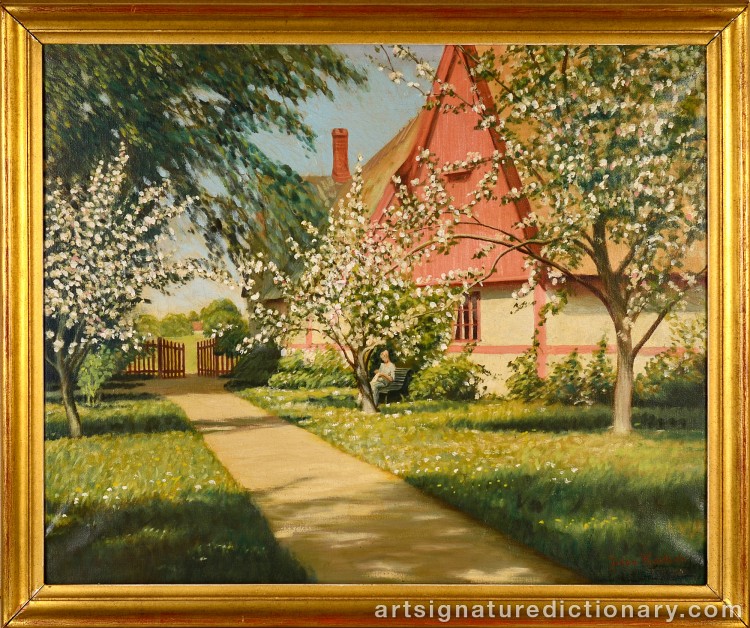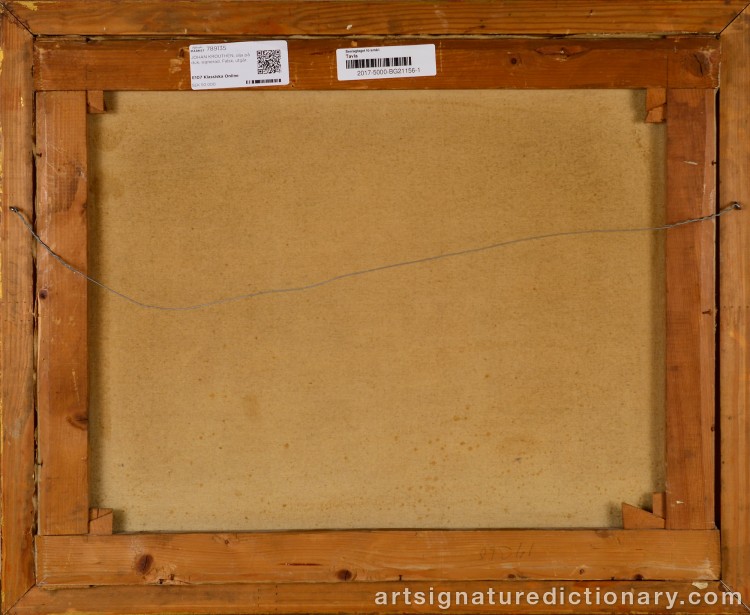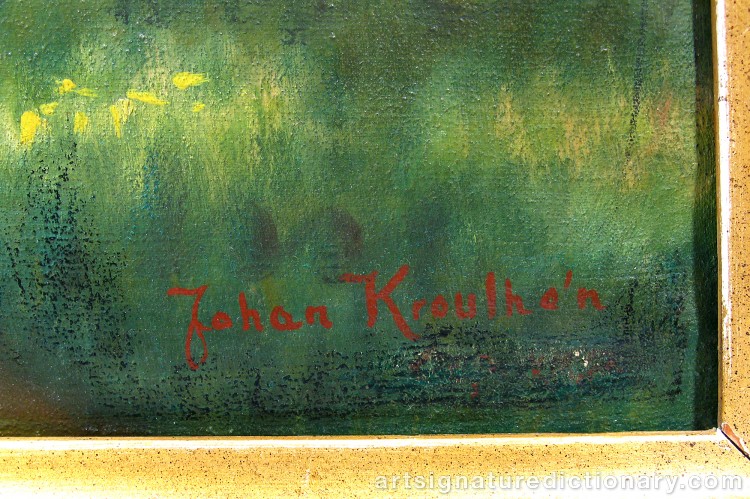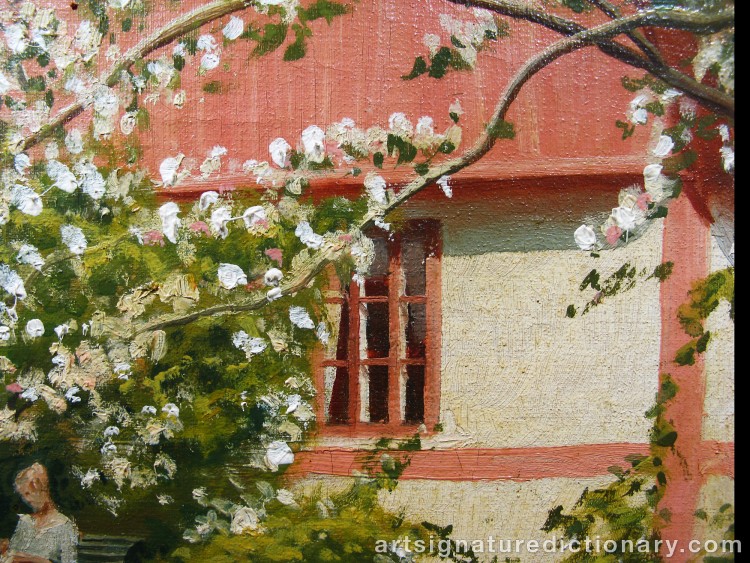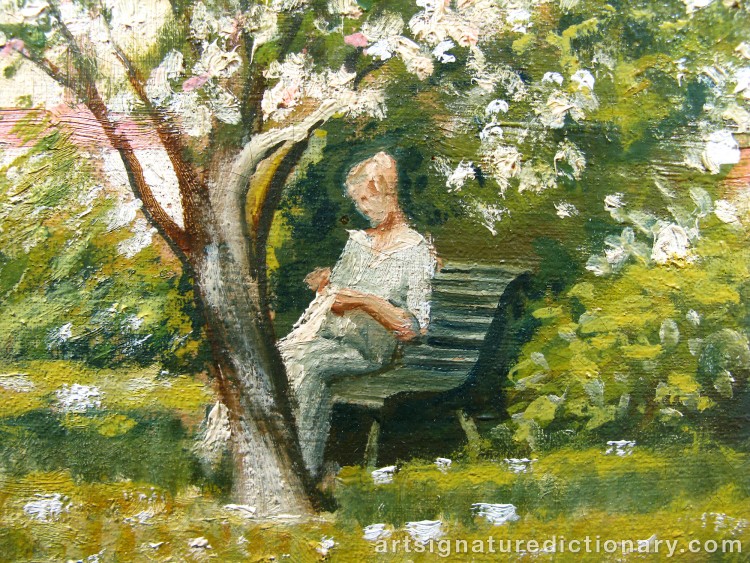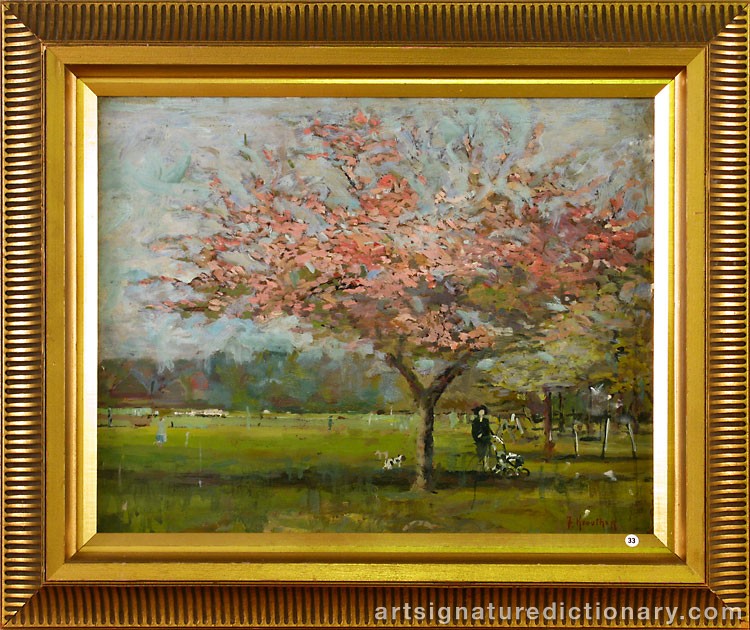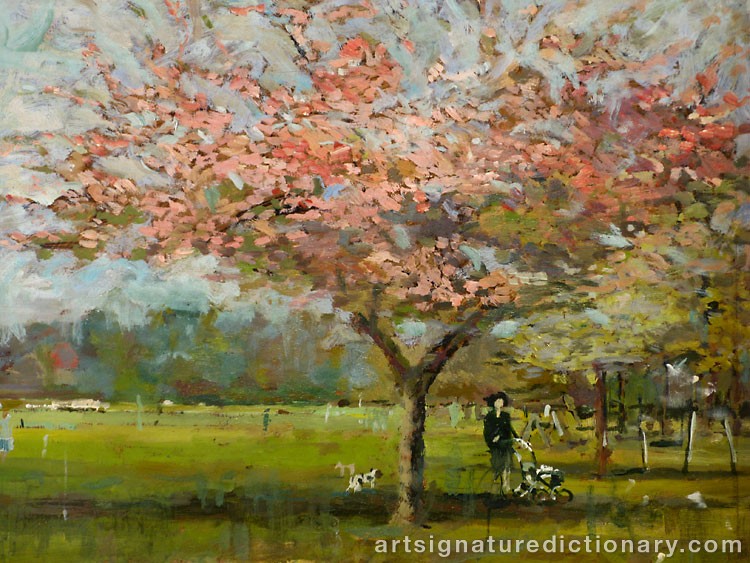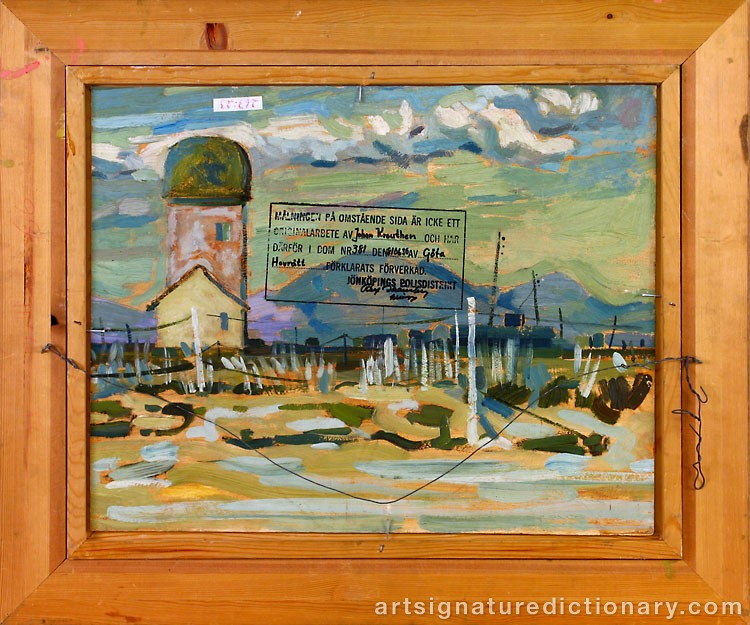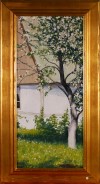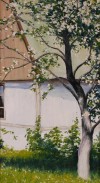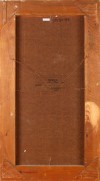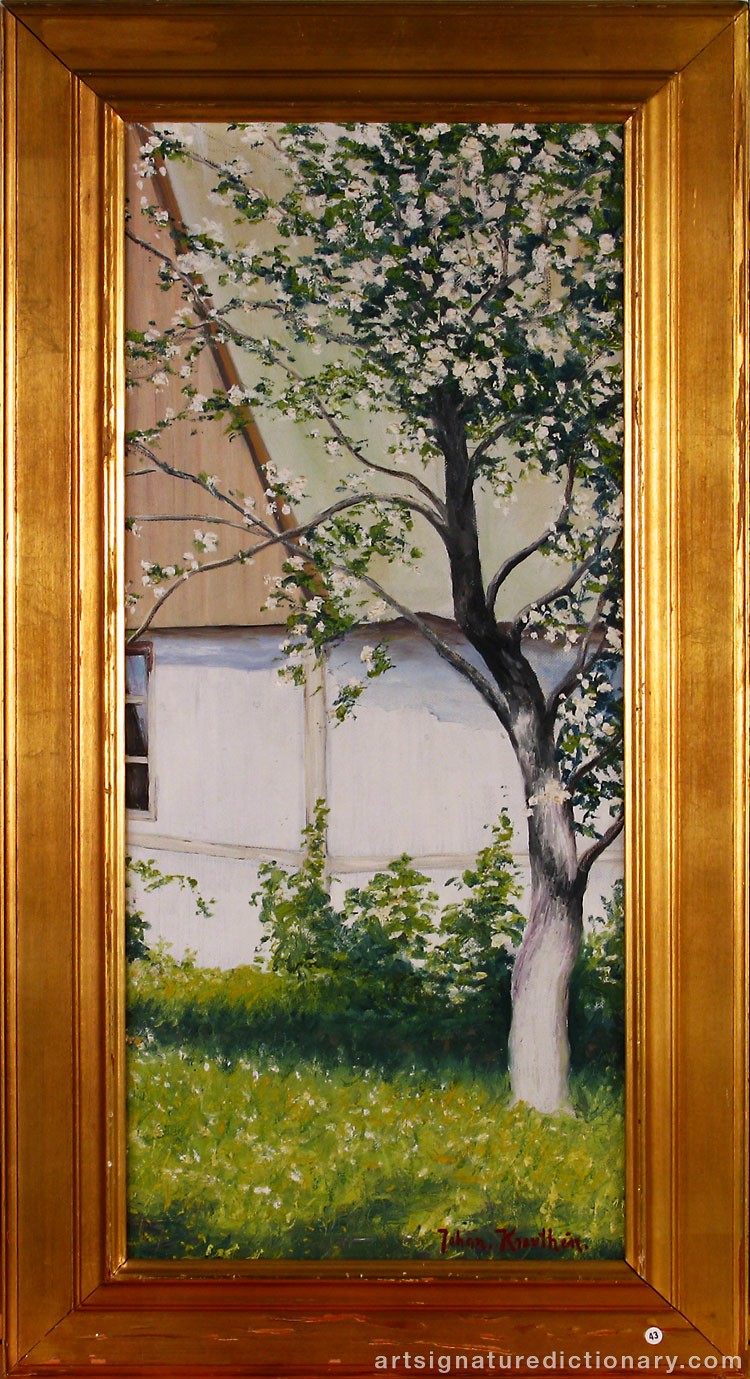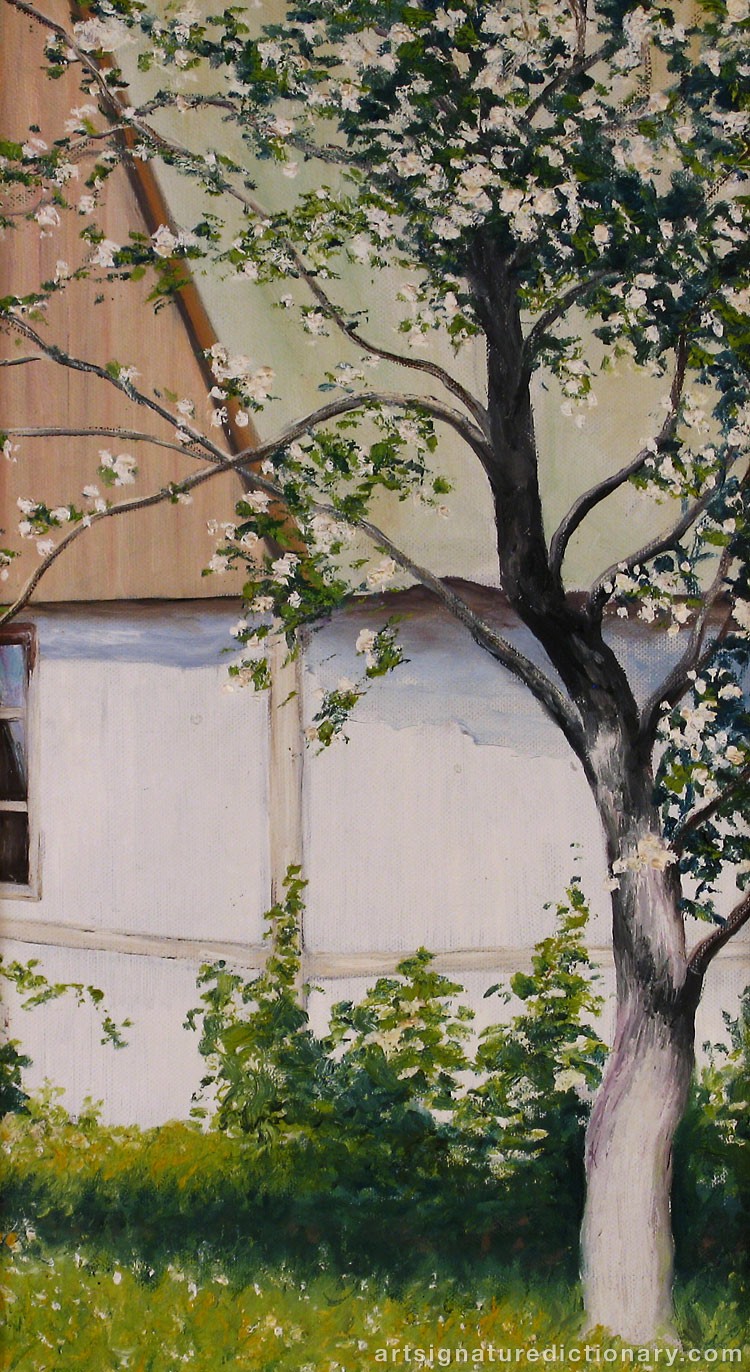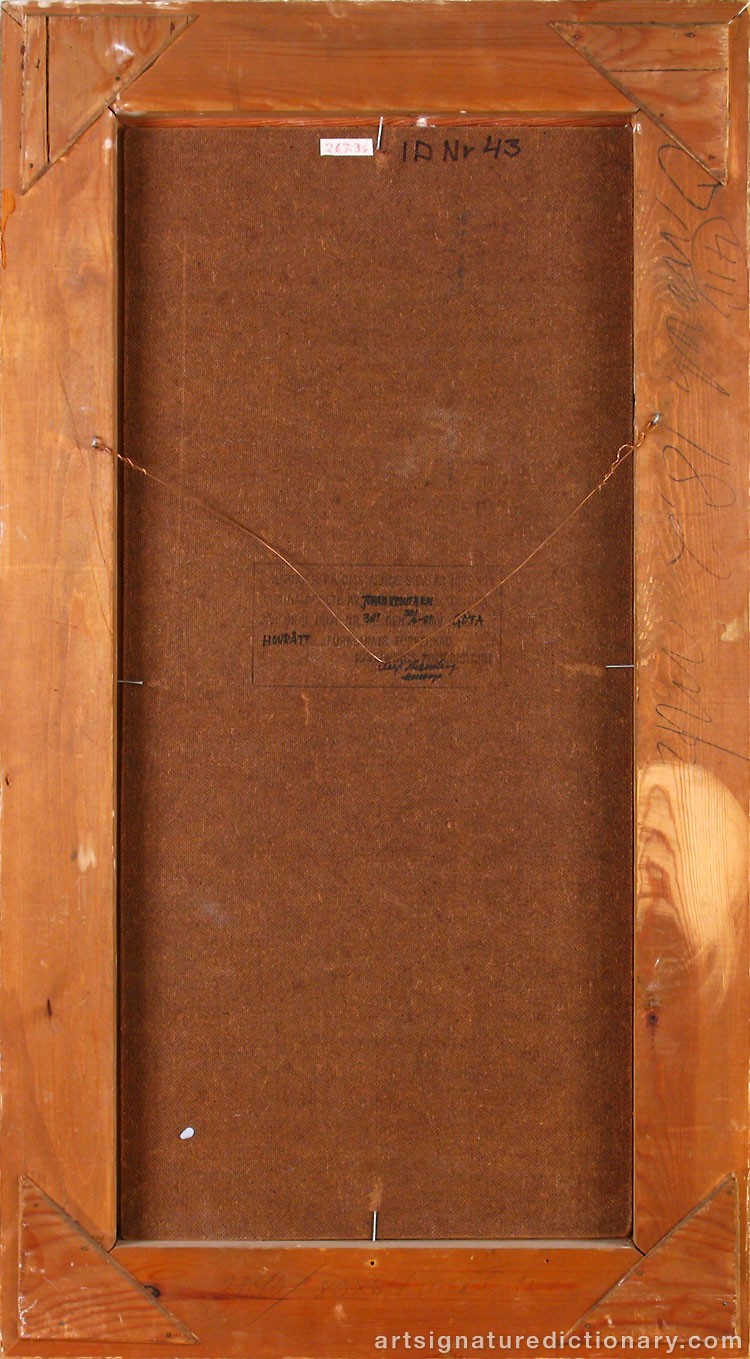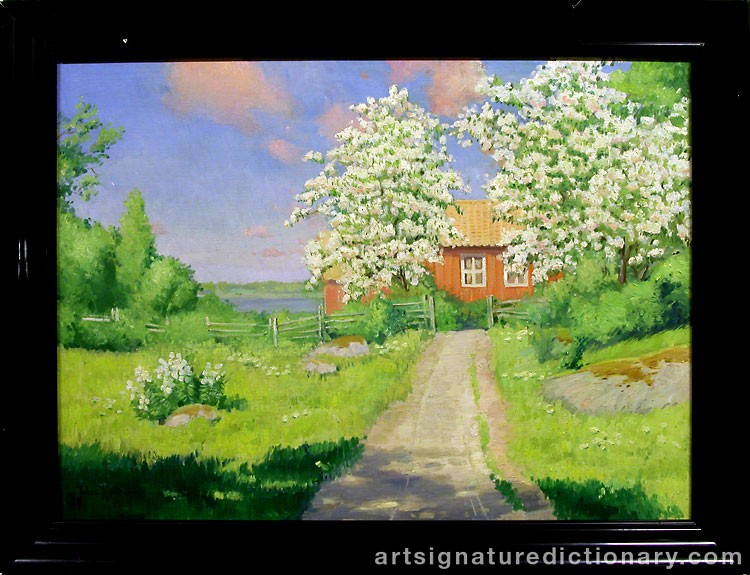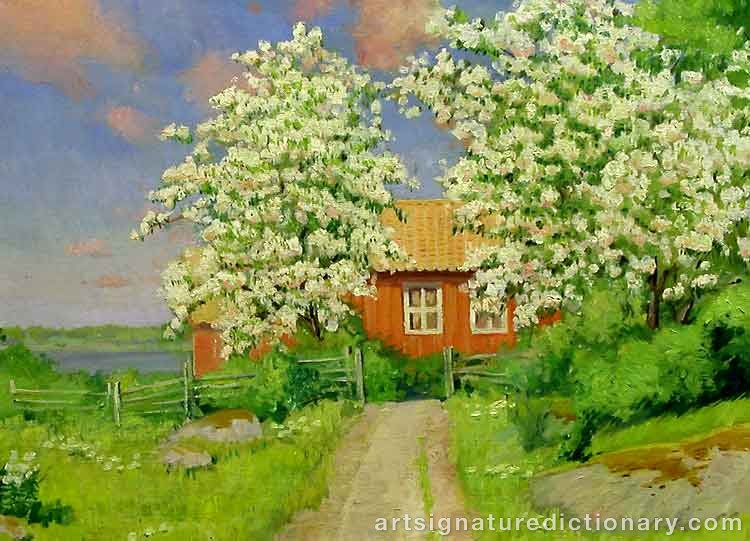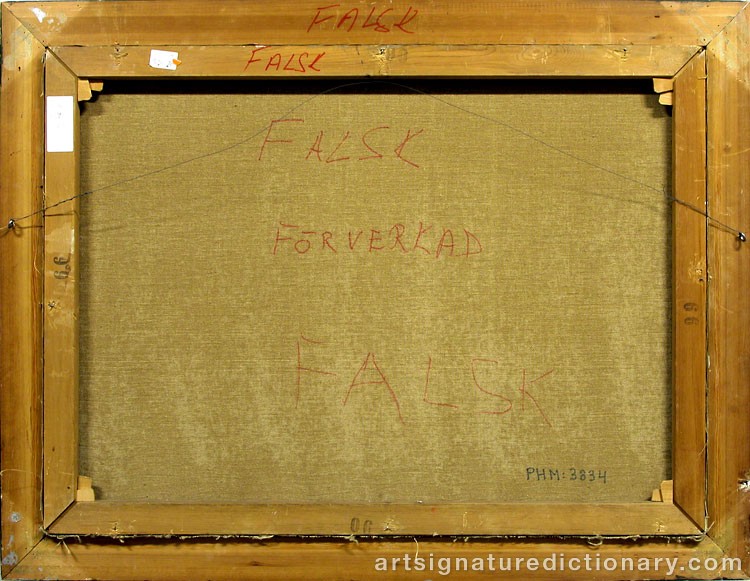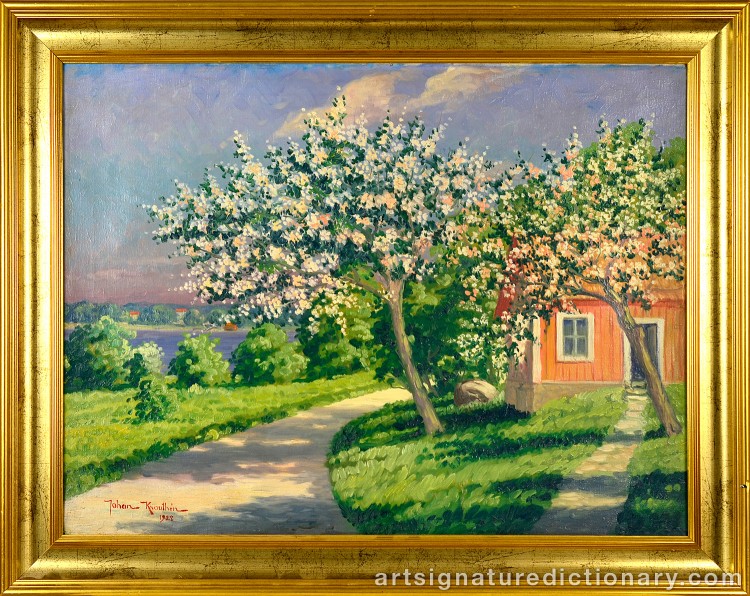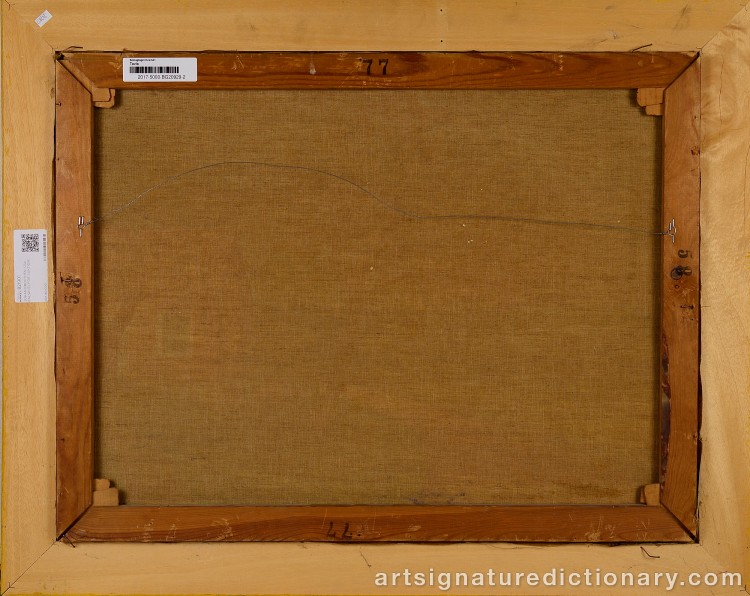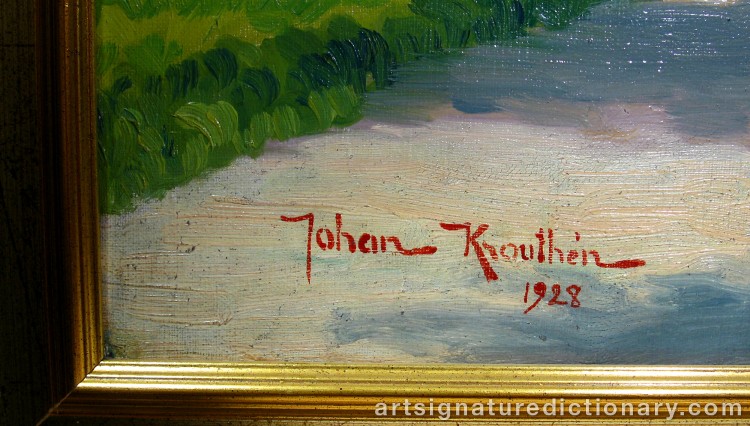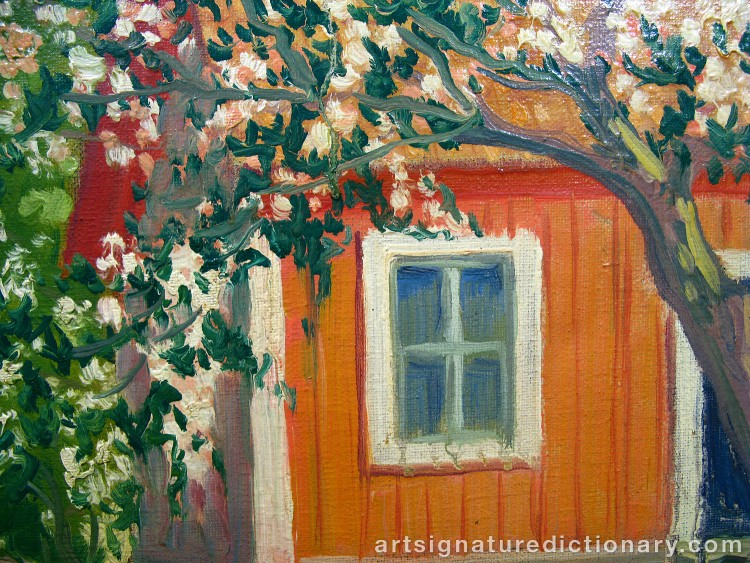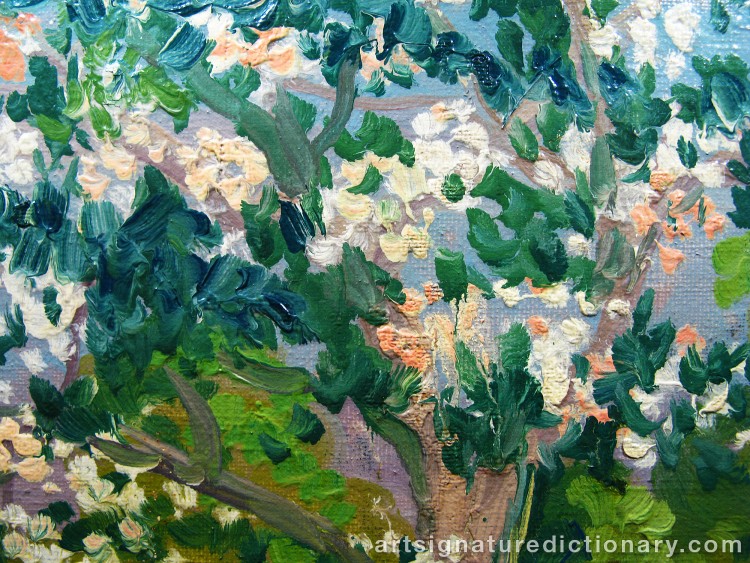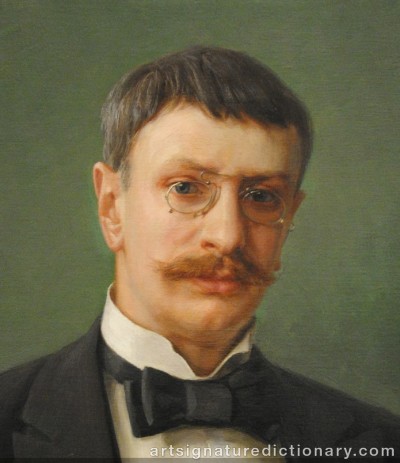
Johan KROUTHÉN
1858–1932, Sweden
Signatures & monograms
35 signatures and monograms by Johan Krouthén on painting and watercolour. Compare authentic and documented counterfeit examples to study signature characteristics.

Signature proven counterfeit

Signature proven counterfeit
Oil on canvas, 39x50 cm, signed J Krouthén. On the back there is another motive (cityscape). The painting and signing are contemporary. It is made of plywood, a material that came into use around 1930th Krouthén belonged to the Skagen school and worked with lights and highlights. The painting is the work of a talented amateur who tried to emulate Krouthén outdoor realism, but it is very roughly made. Krouthén painted softer and freer. The District Court's assessment: The painting is an original forgery and not signed by Johan Krouthén.

Signature proven counterfeit
Genuine counterfeiting. Oil on canvas laid on masonite, 80x35 cm, signed John Krouthén. This is a genuine forgery painted and signed in order to fool the market as being genuine. There have been no changes to the painting. It is very roughly painted and completely foreign to John Krouthén's paintings, who worked with fine shades of color. The signature is more thicker than Krouthén,'s way of signing. The District Court's assessment: The painting has been painted as an original forgery in an attempt to deceive the market.

Signature proven counterfeit
Oil on canvas 65x89 cm, motive red cottage in the garden with flowering fruit trees, signed in lower left corner, black lacquered wooden frame. The painting is equipped with a forged signature. Submitted by the "N.N." to an auction house in Gothenburg, in november 1994. Sold for SEK 50.625. Buyer suspect that this was a forgery, leaving the painting back to auction house. The painting was confiscated from the submitter, "N.N." The investigation has revealed that the painting can be a pastiche executed by one, then, in Denmark living Russian artist and forger (Elena Ivannikova). Several of her paintings have been distributed by ”N.N.”

Signature proven counterfeit

Signature considered genuine

Signature considered genuine

Signature considered genuine

Signature considered genuine

Signature considered genuine

Signature considered genuine

Signature considered genuine

Signature considered genuine

Signature considered genuine

Signature considered genuine

Signature considered genuine

Signature considered genuine

Signature considered genuine

Signature considered genuine

Signature considered genuine

Signature considered genuine

Signature considered genuine

Signature considered genuine

Signature considered genuine

Signature considered genuine

Signature considered genuine

Signature considered genuine

Signature considered genuine

Signature considered genuine

Signature considered genuine

Signature considered genuine

Signature considered genuine

Signature considered genuine

Signature considered genuine

Signature considered genuine
Explore other artists
Discover other notable artists who were contemporaries of Johan KROUTHÉN. These artists worked during the same period, offering valuable insights into artistic movements, signature styles, and authentication practices. Exploring related artists makes it easier to recognize common characteristics and artistic conventions of their era.






